The Incident Command System (ICS) is a standardized approach to incident management that provides a clear organizational structure for effective response and coordination. The ICS organizational chart consists of various components, including Command, Operations, Planning, Logistics, and Finance/Administration. Understanding these components and their roles is crucial for efficient decision-making, resource allocation, and collaboration during incidents. This article will provide a detailed overview of ICS organizational chart.
Contents of this article
Part 1. Understanding the ICS Flowchart
The incident command system flow chart serves as a visual representation of the key components and relationships within the ICS framework. It outlines the flow of information, decision-making, and resource allocation during an incident response. A thorough understanding of this flowchart is essential for successful implementation and coordination.
The flowchart typically begins with the Incident Commander (IC), who assumes overall responsibility for managing the response. This individual is supported by a Command Staff, responsible for strategic decision-making, communication, and liaising with external organizations.
Next in the flowchart, we have the General Staff, which consists of four key sections: operations, planning, logistics, and finance. Each of these sections plays a vital role in ensuring a smooth and effective response.
Part 2. Components of the ICS Organizational Chart
There are several components of the ICS org chart. All of these components are an essential part of the chart.
- Command
At the top of the ICS organizational chart, we find the Command Staff. This includes the Incident Commander, who maintains overall authority and is responsible for establishing objectives, managing resources, and making critical decisions.
- Operations
The Operations Section focuses on tactical activities necessary to achieve the incident objectives. It involves personnel, equipment, and resources directly involved in the response. Within this section, there are Branches, Divisions, and Groups that are responsible for managing specific areas of the incident, ensuring proper coordination and communication while maximizing available resources.
- Planning
The Planning Section plays a critical role in collecting, evaluating, and disseminating information. It aids in developing and documenting incident action plans, facilitating resource procurement, and coordinating between different operational sections. Planning also entails maintaining situational awareness and providing accurate status updates to ensure efficient decision-making.
- Logistics
The Logistics Section of the ICS org chart is responsible for providing essential support and resources necessary for an effective response. This includes managing communication systems, procuring and distributing equipment, organizing facilities, and ensuring the availability of necessary supplies.
- Finance
The Finance Section manages the financial aspects of the incident. It deals with budgeting, procurement, expenditure tracking, and accounting for all incident-related costs. By overseeing financial matters, this section ensures transparency, effective financial management, and adherence to relevant regulations and policies.
Part 3. Significance of Understanding ICS Organizational Charts
Understanding ICS organizational charts is important. From clarity of command and reporting structure to improved coordination and collaboration, there are many reasons why this is significant.
- Clarity of Command and Reporting Structure
The primary purpose of ICS organizational charts is to provide clarity in the chain of command and reporting structure. During an incident, effective communication and clear lines of authority are crucial for efficient decision-making.
- Effective Resource Allocation and Task Assignment
A well-designed ICS organizational chart aids in the effective allocation of resources and assignment of tasks. By clearly defining roles and responsibilities within the structure, incident commanders can make informed decisions regarding resource deployment.
- Enhanced Coordination and Collaboration
ICS organizational charts promote enhanced coordination and collaboration among various agencies and stakeholders involved in incident management. By visualizing the interconnections between different positions and entities, it becomes easier to establish effective communication channels.
Part 4. ICS Organizational Chart Examples
ICS organizational charts can be of various types. Each of these types has their unique needs and features.
- General Incident Command System Organizational Chart
The General Incident Command System (ICS) Organizational Chart serves as a fundamental framework for incident management in various jurisdictions. It typically consists of five major functional areas: Command, Operations, Planning, Logistics, and Finance/Administration. Each functional area is further divided into specific positions, with clearly defined roles and responsibilities.
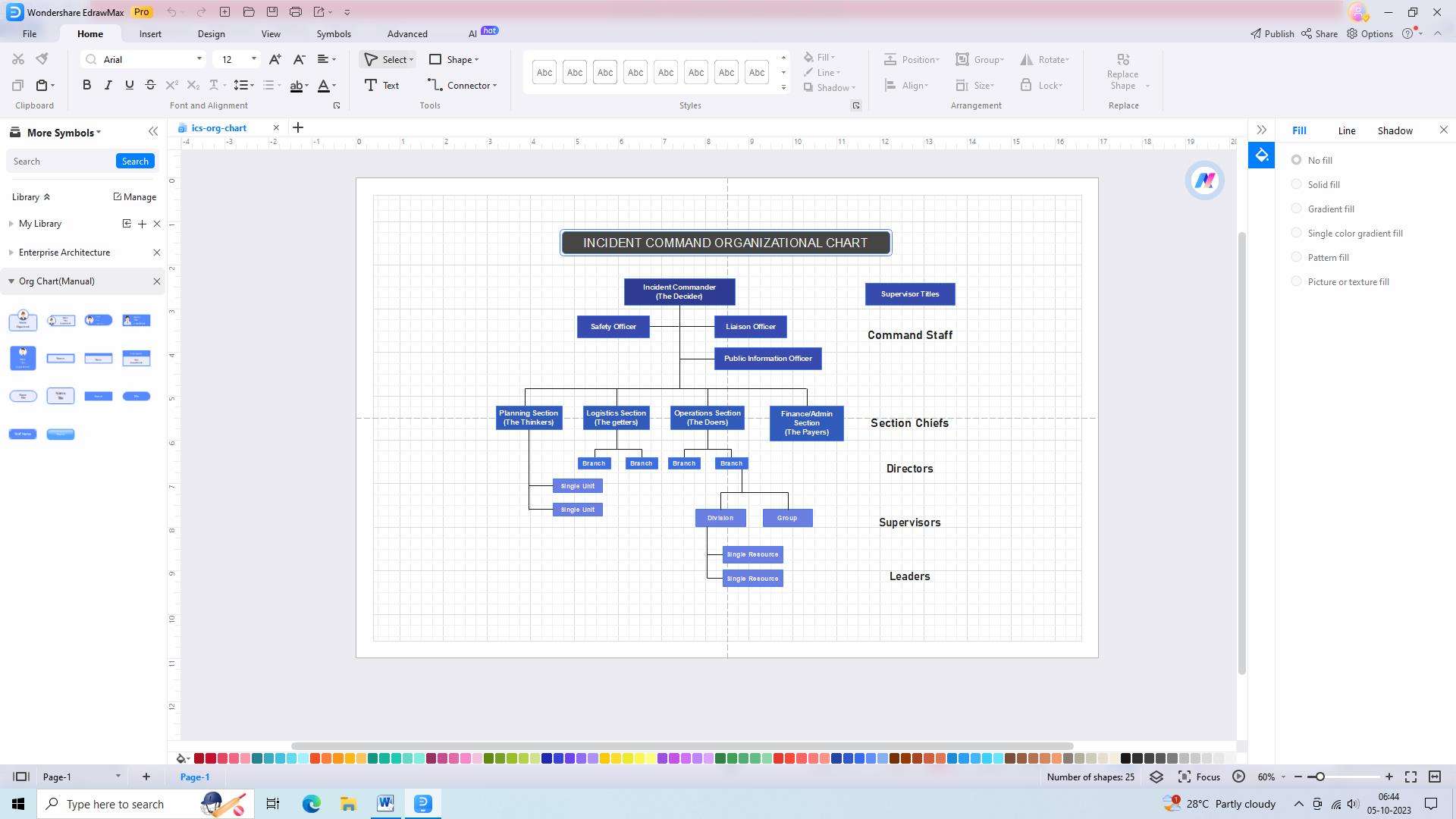
- Designated Incident Command System Organizational Chart
In certain situations, especially large-scale incidents or incidents involving multiple jurisdictions, a Designated Incident Command System (ICS) Organizational Chart may be used. This incident command system flow chart allows for a more specialized and tailored command structure, ensuring effective coordination between multiple agencies. It may include additional sections, such as Multi-Agency Coordination Groups, Area Command, or Incident Management Teams, to facilitate seamless collaboration among different entities.
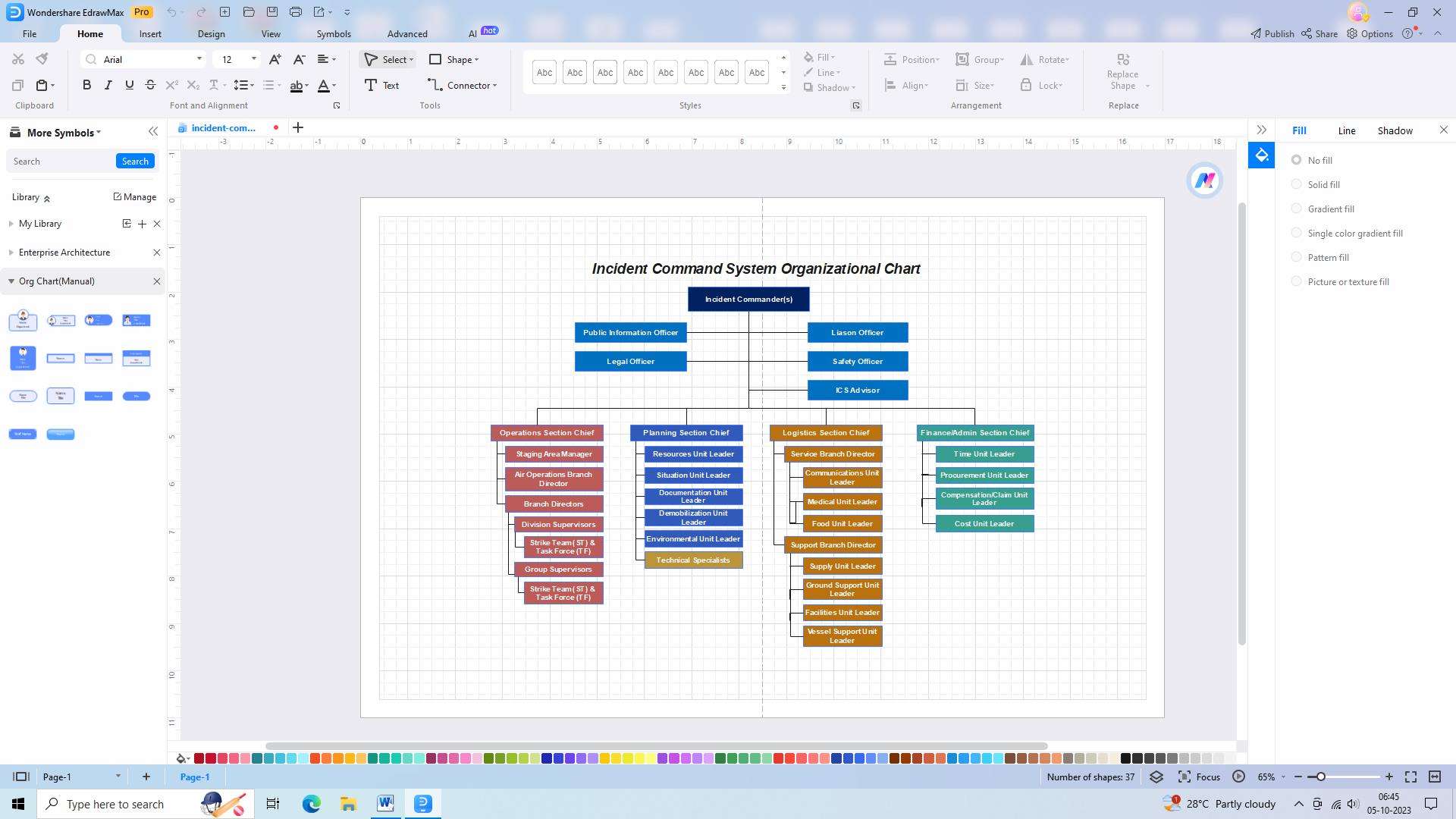
- Working of an ICS Organizational Structure
Understanding the working of an ICS organizational structure is essential for effective incident management. The ICS structure operates based on the principles of unity of command, modular organization, and manageable span of control. Unity of command ensures that individuals have a single supervisor to report to, preventing confusion and maintaining clear lines of authority.
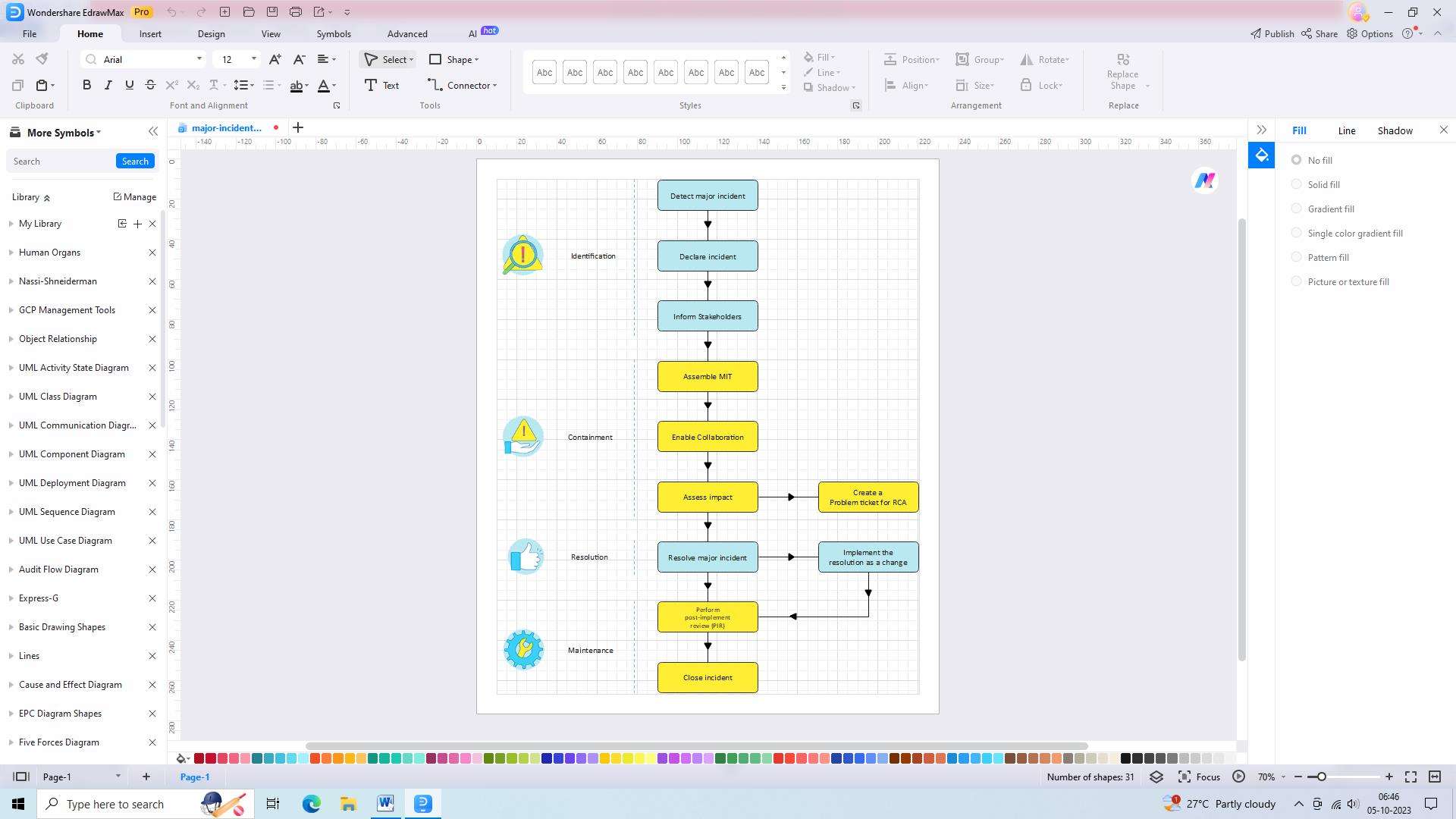
Part 5. How to Create an ICS Organizational Chart Using EdrawMax?
Wondershare EdrawMax is a powerful organizational chart creation tool that allows you to create professional-looking charts with ease. It provides an intuitive drag-and-drop interface, vast collection of symbols, abundant templates, and more, enabling you to create visually appealing organizational charts quickly and easily.The steps to create an ICS org chart using Wondershare EdrawMax are as follows:
Step 1: Launch EdrawMax on your Computer
Begin the process of creating an ICS org chart by launching the Wondershare EdrawMax program on your computer.
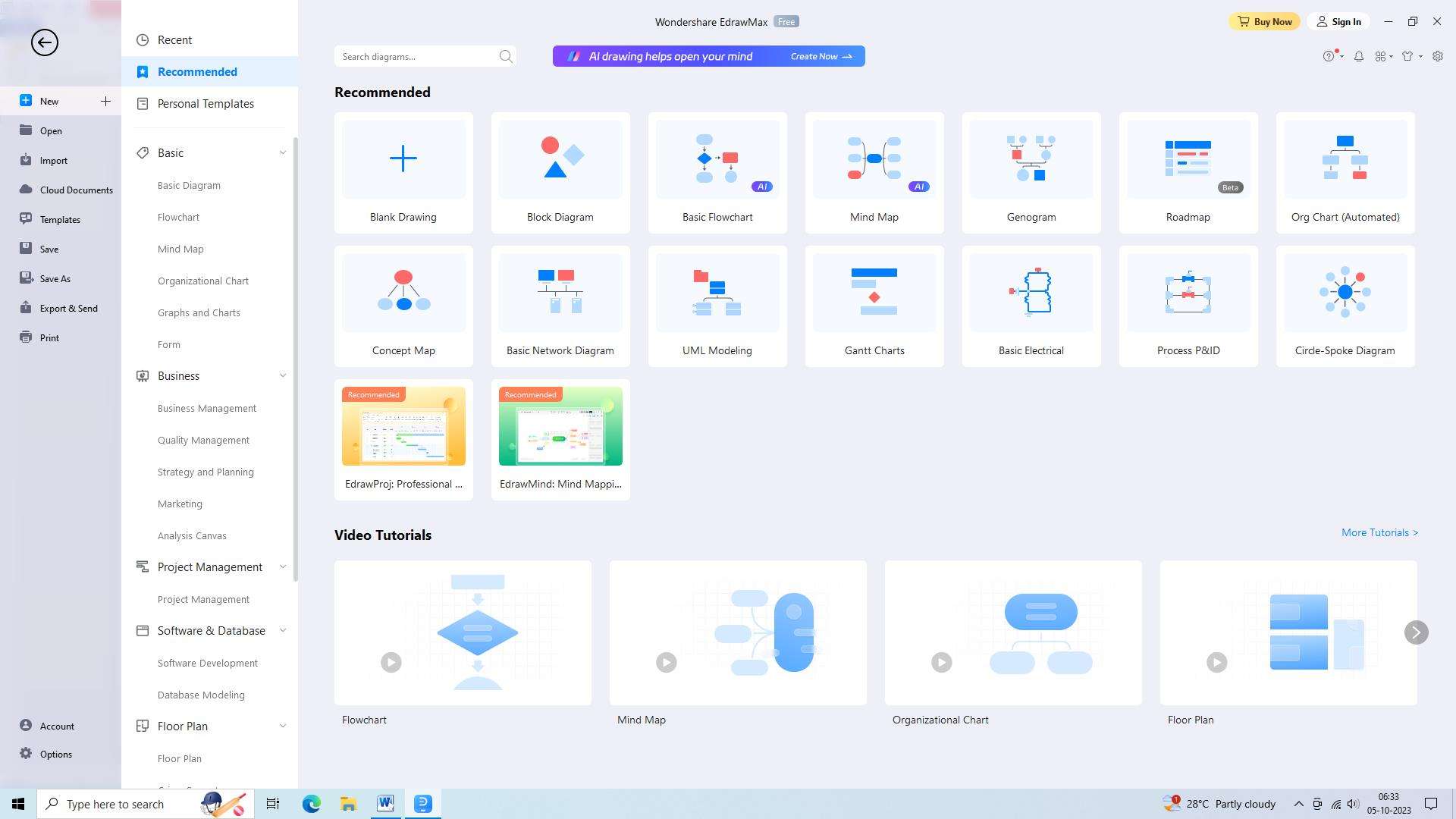
Step 2: Find a suitable ICS organizational chart template
- EdrawMax has a wide range of ICS organizational chart templates that you can easily customize to your needs. Search “Incident Command Organizational Chart” in the template section.
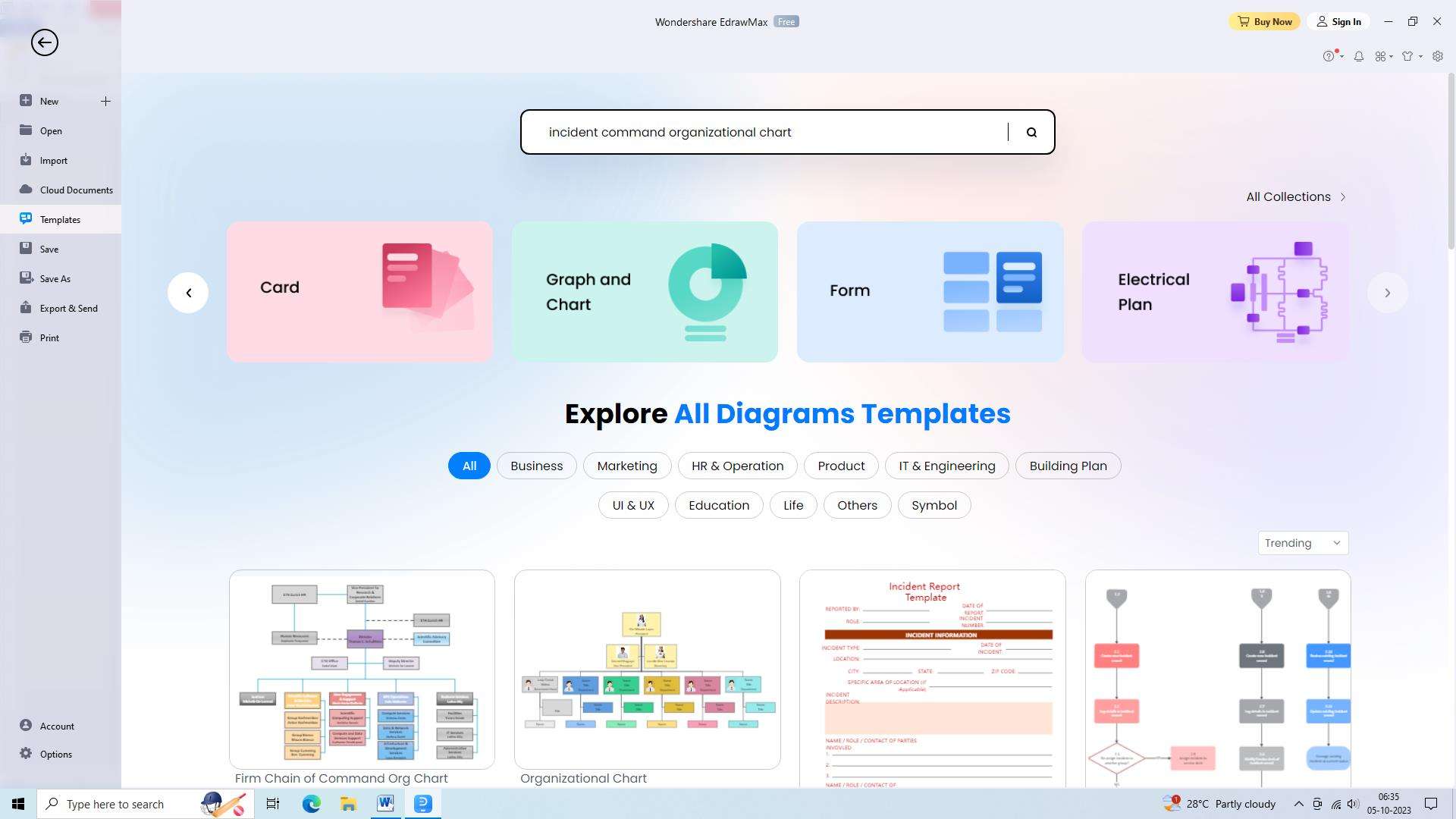
- After you have found an ICS organizational chart template to your liking, select it to get started.
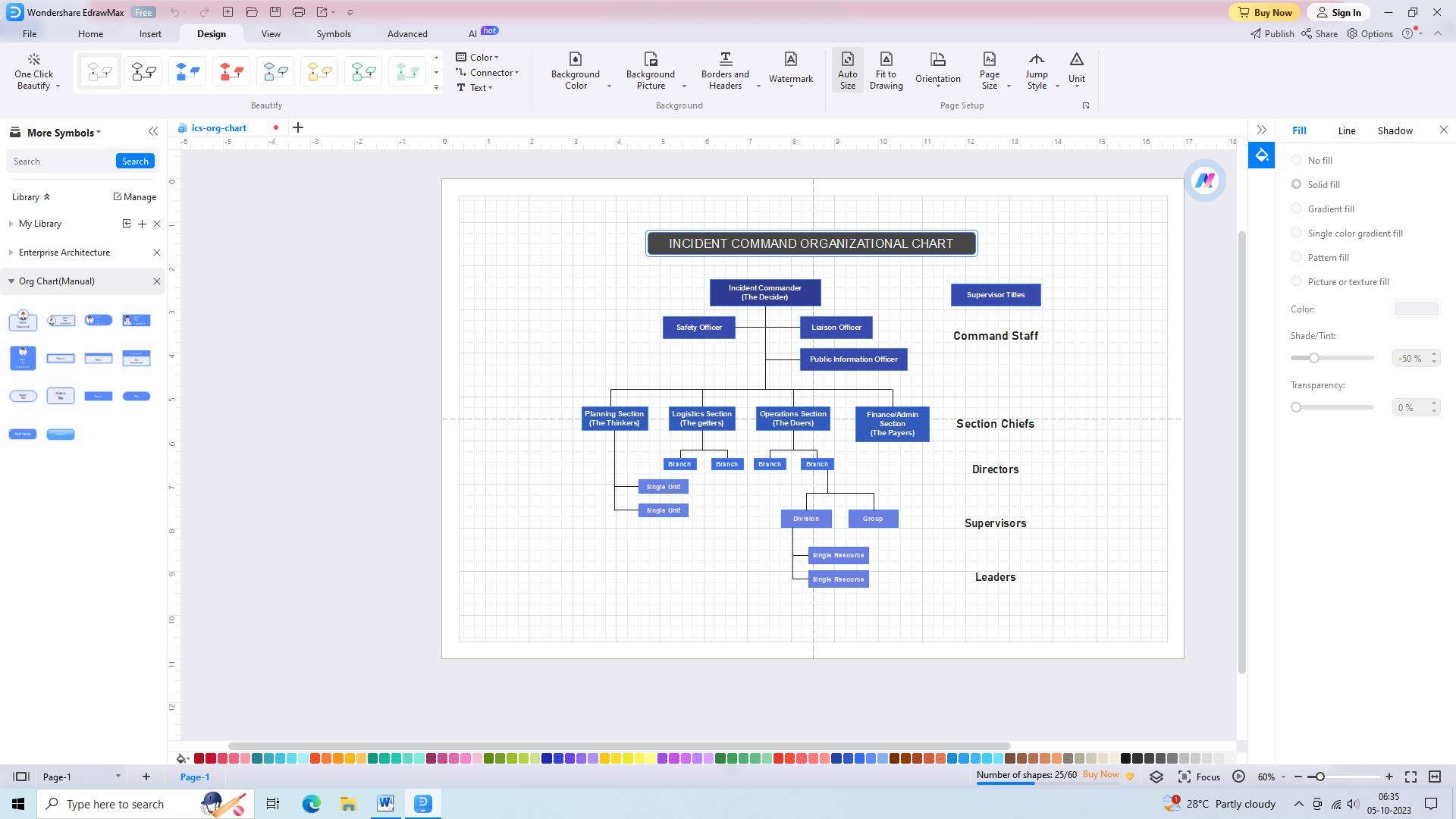
Step 3: Design the ICS organizational chart
Using the tools provided by EdrawMax, you can design your ICS organizational chart to fit the needs of your company or organization.

Step 4: Export the ICS organizational Chart
When you are satisfied with the design of your ICS org chart, you can export it in a variety of formats, such as PDF, PNG, and SVG.
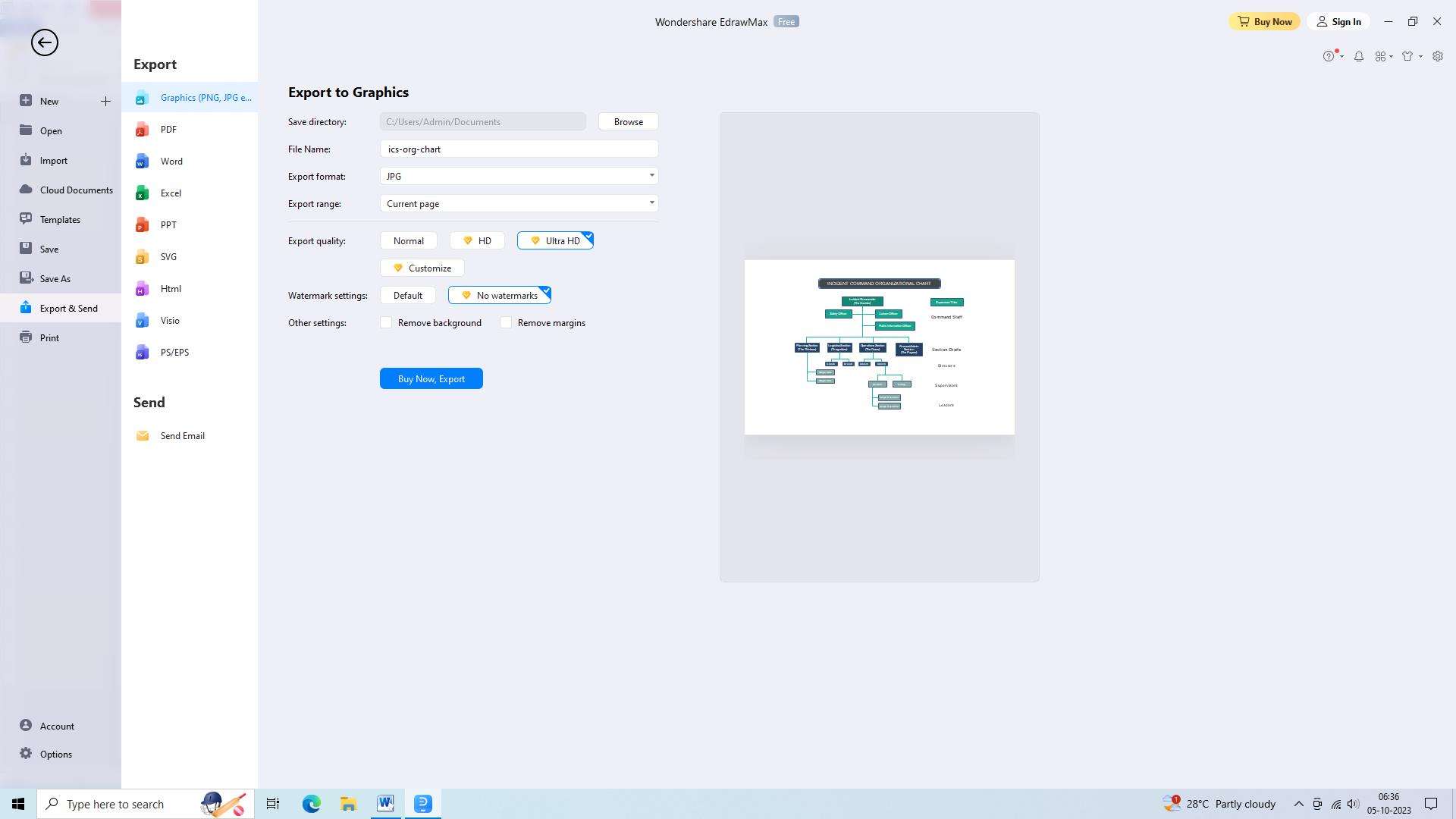
Challenges and Limitations of the ICS Organizational Chart
ICS organizational charts are effective. However, there are a few challenges and limitations to them. Here are some of these common challenges and limitations:
- Rigidity
One significant limitation of the ICS org chart is its relative rigidity. Although it provides a clear chain of command, this fixed structure may hinder adaptability in rapidly evolving situations.
- Communication Breakdowns and Information Bottlenecks
Another challenge associated with the incident command system flow chart lies in the potential for communication breakdowns and information bottlenecks. As incidents escalate in complexity, the flow of critical information becomes crucial for effective decision-making.
Conclusion
The ICS organizational chart is a vital tool for effective incident management. It provides clarity of command and reporting structure, enables efficient resource allocation and task assignment, and promotes enhanced coordination and collaboration among different agencies and stakeholders. By understanding and utilizing the ICS org chart, incident commanders can effectively manage incidents and ensure a coordinated response.




